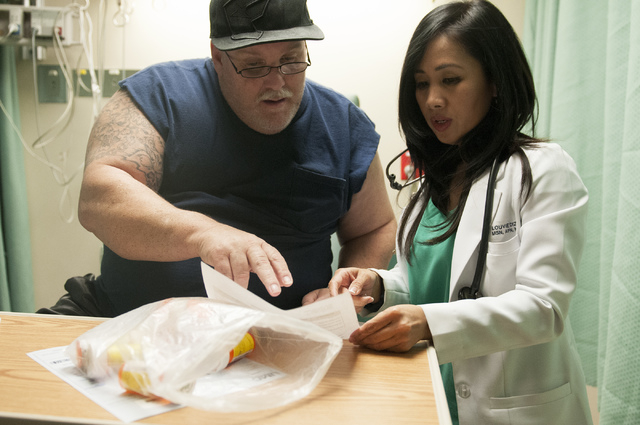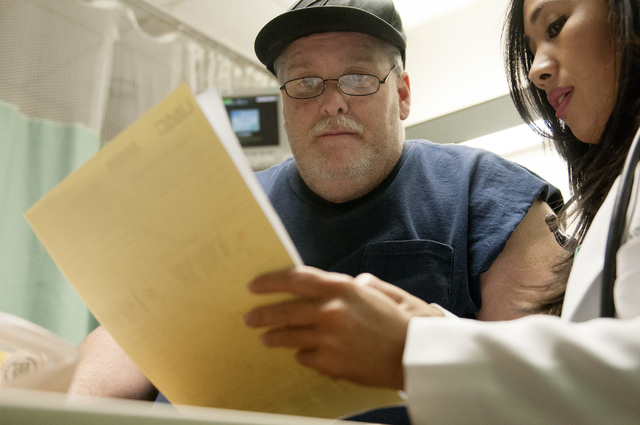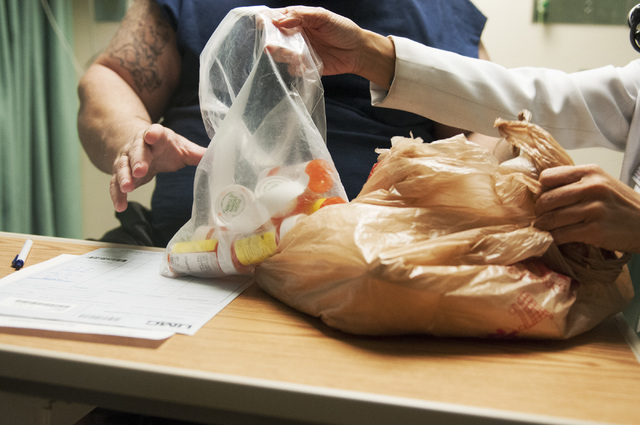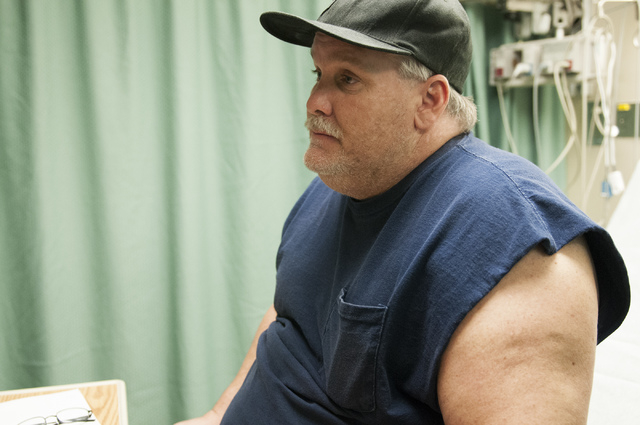Obamacare transforming how local hospitals care for patients
Obamacare has changed the way you shop for insurance.
But long before you had to sift through new plans, the law was transforming how local hospitals care for patients.
Obamacare has new rules designed to curb 30-day hospital readmissions. Medical centers that fail to measure up pay the price: The Centers for Medicare and Medicaid Services cut their reimbursements by up to 1 percent in 2013, and will trim them as much as 2 percent in 2014 and 3 percent in 2015 and beyond.
Some experts say the regulations have their downside, penalizing hospitals for the poor overall health of seriously ill patients. That hasn’t stopped hospital systems across Southern Nevada from launching tools and procedures to slash readmissions. Figures show some of those efforts have paid off, though many local hospitals have a ways to go to avoid those penalties.
Start with how hospitals are limiting readmissions.
Valley Health System has rolled out software that automatically controls insulin levels to slash infection risks among patients in its five local hospitals. Diabetic or not, patients with high blood sugar are likelier to have post-operative infections, and low blood sugar could kill a patient. The new system, called Endotool, automatically times blood-sugar tests and reminds nurses to check glucose levels. It also tells nurses to change the rate of intravenous insulin drips when necessary. It practically eliminates human error, said Sharon Sanchez, a registered nurse in the Diabetes Treatment Center at Desert Springs Hospital.
There are administrative changes as well.
Multidisciplinary rounds now bring together Valley Health nurses, case managers, pharmacists and physical therapists to determine readmission risk. For patients who go home on more than seven medications, pharmacists work with primary-care providers to cut harmful drug interactions. A patient with two or more serious, chronic conditions — say, heart failure and cancer — is considered higher-risk, as are patients on medications that tend to cause readmissions. For patients at moderate to high risk of readmission, Valley Health works on setting up home health care.
High-risk patients at University Medical Center benefit from a “robust” hospitalist program, said Chief Nursing Officer Vicki Huber. Hospitalists are doctors who help patients maneuver the medical system. At UMC, they serve as primary-care providers for patients who don’t have a regular doctor, and they follow up to make sure patients take medications and eat properly.
UMC also just opened its Congestive Heart Failure Clinic, a nurse practitioner-run center where patients learn to manage heart disease through medication, weight loss and proper diet. Plus, the hospital is developing a pilot program with ambulance companies to provide preventive care for patients who frequently call for a lift to the ER.
And both Valley Health and UMC also now check up on patients by phone within three days, arrange follow-up appointments within a week and enroll patients in community networks that call patients to follow up on how they’re doing every day for a month.
HCA Healthcare didn’t offer details on what it’s doing to reduce readmissions, but company officials said in a statement that they’re “dedicated to providing our patients with the highest-quality care” at Sunrise Hospital, Sunrise Children’s Hospital, MountainView Hospital and Southern Hills Hospital.
“From discharge planning and education to bedside delivery of medications, our facilities have a number of initiatives in place to keep our patients from requiring additional care,” the statement said. “We also work closely with the primary care physicians and specialists in our community to ensure that patients are following up with their physician post-discharge.”
The measures do require financial investments: Valley Health had to contract with a vendor to make patient follow-up calls, and UMC has had to hire hospitalists and nurse practitioners. But officials say the costs make sense. Huber said it’s more expensive to readmit patients than to follow up with them. Valley Health’s Endotool has already paid for itself, Sanchez said, though the company declined to say what it paid for the software.
Nadine Atkinson, Valley Health’s director of case management, said the hospital’s efforts haven’t added to costs patients pay. Rather, they’re “an added benefit.”
“It’s a cost we incur, but in the end, we want to do the right thing,” Atkinson said. “We want to make sure patients get what they need the first time out, and make sure they have resources if they get out into the community and feel like they’re failing.”
Some metrics show the changes have made a difference. UMC, for example, ranks in the top 25 percent among the 119 members of the University Healthcare Consortium for its low percentage of 30-day readmissions. Since its heart clinic opened in August, the hospital has had just one congestive heart-failure patient out of 65 get readmitted. That’s well below an average 30-day readmission rate of 24.7 percent in 2010, the latest year with available statistics, according to the U.S. Department of Health and Human Services.
Valley Health officials credit their Endotool system with eliminating chest-wound infections in heart patients and cutting hypoglycemic incidents from 3 percent to 0.5 percent at Desert Springs.
An August report from Kaiser Health News showed mixed trends in hospital readmission penalties.
Only one local acute-care hospital — St. Rose Dominican’s Siena campus — faces no readmission-driven payment cut in 2013. For the rest, reimbursement cuts range from a low of 0.04 percent at Summerlin Hospital to the maximum 1 percent at Valley Hospital.
But six local hospitals — Desert Springs, MountainView, Spring Valley, Valley, and St. Rose Dominican’s De Lima and San Martin campuses — curtailed readmissions enough to reduce payment cuts in 2014.
Overall, Nevada ranked No. 11 for its share of hospitals penalized, at 79 percent. It ranked in the middle of the pack, at No. 24, for its average payment penalty. No local hospital will see a pay cut anywhere near the 2 percent maximum in 2014, Kaiser’s report said.
Still, despite any progress, the new rules can be tough to comply with, according to a report from Harvard researchers. Their May analysis in the Wall Street Journal showed that most readmissions are unavoidable, because the typical hospital patient already faces life-threatening complications. Plus, smaller, financially struggling hospitals may not have the money to improve equipment and processes. And the Kaiser report said hospitals that treat a lot of low-income patients are likelier to have trouble cutting readmissions.
Joyce Malaskovitz, director of health and wellness and a nurse at Desert Springs, said she appreciated Obamacare’s emphasis on stopping readmissions, but she added the rules aren’t easy to meet in a town with an aging population that has complex needs.
“People with diabetes don’t just have diabetes. They usually have diseases related to kidneys and the heart, and they may have had strokes. They may have hypertension, and they may be obese,” she said. “When you start putting all of those together, especially in an older patient, they are going to come back to the hospital more frequently. You can try to prevent it, but age is against you.”
Contact reporter Jennifer Robison at jrobison@reviewjournal.com. Follow @J_Robison1 on Twitter.



































